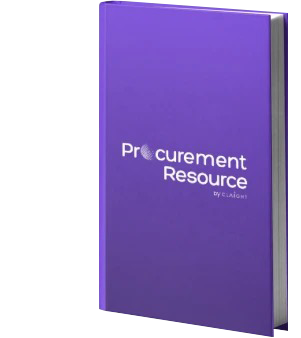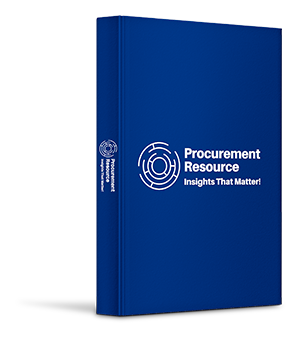Reports

Global Beverage Cans Market: Country Overview; Recent Events; Value Chain Analysis; Production Process; Price Analysis; Indicator Analysis; Market Dynamics: Drivers & Constraints, Innovations & Trends, SWOT Analysis, Porter’s Five Forces; Industry Best Practices: Sourcing Strategy, Procurement Model, Key Factors Influencing the Quotation; Key Supplier Analysis, 2024-2032
Beverage Cans Industry Report by Regional Category Spend, Price Analysis, Key Demand, and Price Indicators, and Best Buying Practices
The global Beverage Cans market produced a volume of about 388.3 billion units in 2021. The industry is projected to grow at a CAGR of around 3% in the forecast period of 2022-2027 to reach a volume of about 463.7 billion units by 2027.
The global Beverage Cans industry report gives a comprehensive analysis of the industry, including key segments, trends, drivers, restraints, the competitive landscape, and other essential market aspects. The growing packaging demand from various beverage product sectors is driving the industry's growth. North America is the highest category spender by region, driving the need for the Beverage Cans industry.
Industry Definition and Segmentation
A beverage can, or drink can, is a container designed to accommodate a defined amount of liquid (one serving of a beverage), such as fruit juices, carbonated soft drinks, alcoholic beverages, energy drinks, herbal teas, teas, and so on. The Beverage Cans industry report comprises segments by material type (aluminium and tin), application (beer, CSD, energy drinks, still drinks, and others), and region (North America, Europe, Asia Pacific, the Middle East, and Africa, and South America).
North American Region is Driving the Growth of the Industry
North America holds a significant share in the industry as product consumption is high in the United States and Mexico. Additionally, North America is the region with the highest carbonated beverage consumption propelling the industry growth. Beverage producers' active marketing initiatives are also likely to have a favourable impact on the development of the beverage can industry.
The market is driven by the growing demand for portable packaging solutions by end-user industries. Factors such as rapid urbanisation, increasing population, and rise in disposable income paired with high expenditure on drinks are propelling the industry's growth. Furthermore, the use of metal's physical qualities, Easy labelling and printing on the metal surface, great malleability, and design are gaining traction, further boosting sales in the sector. Moreover, The growing popularity of beverages with natural, low-calorie, and low-sugar ingredients like stevia due to the rising health-consciousness among consumers is likely to further the market growth. In addition, the introduction of fruit juices and sports drinks and rising demand for Ready-to-Drink (RTD) products in can packaging are likely to expand the market growth. Also, with the wide and easy availability of alcoholic beverage assortments paired with expanding distribution channels and new product releases, the market is likely to witness growth.
Best Procurement Practices
The global Beverage Cans industry report by Procurement Resource gives an in-depth analysis of the best buying practices followed by major global Beverage Cans regions across the globe, such as engagement models, contract terms, and buyer and supplier negotiation levers, among others.
Category Management Studies
Modern cans are usually made by punching a flat blank from a rigid cold-rolled sheet. This sheet is usually made of an alloy of aluminium and is about to provide strength and formability. First, the flat blank is shaped into a three-inch-diameter cup. Next, the can is formed by pushing the cup through a second forming process known as "ironing." At this point, the bottom of the can is likewise included. The flexible metal deforms into an open-top can shape. The side of the product is thinner than the top and bottom portions, where rigidity is required, thanks to the superior technology of the dies and forming machinery. Plain lids (also known as shells) are stamped from a coil of aluminium and then transported to another press, converted to easy-open ends. A conversion press makes an integrated rivet button in the lid and scores the opening while simultaneously making the tabs in another die from a separate aluminium strip.
Product Developments by Manufacturers, Further Augmenting the Procurement of Beverage Cans
The industry is being aided by the growing preference for Aluminum cans due to a spike in demand for environmentally friendly packaging alternatives. These cans can also be personalised in terms of colours and 3D printing and embossed to make them more attractive to buyers, which is likely to boost the market growth. Furthermore, developing technologies to manufacture re-closable beverage cans to improve product performance and rising consumer demand for plastic-free containers are likely to increase demand further. Other product improvements by manufacturers like combining thermochromic, photochromic, glow-in-the-dark, and reveal technologies into solvent inks to attract more consumers are likely to impact the market positively.
The regional markets for the industry can be divided into North America, South America, Europe, the Middle East and Africa, and the Asia Pacific.
Key Industry Players Mentioned in the Beverage Cans Industry Report
- Ball Corporation
- Crown Holdings, Inc.
- Ardagh Group S.A.
- Canpack S.A.
- CMPC Holdings Ltd.
Market Landscape
With many worldwide enterprises, the global market is highly fragmented. The market follows competitive prices, technological breakthroughs, and new packaging solutions to achieve a competitive edge. The Beverage Cans Market's primary tactics are product launches, mergers and acquisitions, joint ventures, and regional growth. Furthermore, new product releases and manufacturing expansion in places where sustainability consciousness is growing are two effective business tactics these firms use to expand their product range and meet expanding demand.
Key Initiatives by Companies
- After ten months of planning, CANPACK, a global maker of aluminium beverage cans, commenced production at its greenfield site in Stbro, Czech Republic. The factory, which cost US$ 117.5 million to build, has a capacity of 1 billion cans per year.
- CrownSmart has unveiled a new packaging concept. Brand owners from North America to Europe may develop innovative bespoke packaging that offers a wide range of content and experiences using the AR codes included in the box.
1. Executive Summary
2. Beverage Cans Market Snapshot
2.1. Beverage Cans Market Outlook
2.2. Beverage Cans Industry Analysis by Material Type
2.2.1. Aluminum
2.2.2. Tinplate
2.3. Beverage Cans Industry Analysis by Application
2.3.1. Beer
2.3.2. CSD
2.3.3. Energy Drinks
2.3.4. Still Drinks
2.3.5. Others
2.4. Region Overview
2.4.1. North America
2.4.2. Asia Pacific
2.4.3. Europe
2.4.4. Latin America
2.4.5. Middle East and Africa
3. Impact of Recent Events
4. Beverage Cans Value Chain Analysis
5. Beverage Cans Production Process
6. Trade Analysis
7. Major Risk Factors in Sourcing
8. Beverage Cans Cost Structure
9. Beverage Cans Price Analysis
10. Key Demand Indicator Analysis
11. Key Price Indicator Analysis
12. Beverage Cans Market Dynamics
12.1. Drivers & Constraints
12.2. Industry Events
12.3. Innovations & Trends
12.4. Swot Analysis
12.5. Porter’s Five Forces
12.5.1. Buyer Power
12.5.2. Supplier Power
12.5.3. Threat of New Entrants
12.5.4. Threat of Substitutes
12.5.5. Industry Rivalry
13. Industry Best Practices
13.1. Sourcing Strategy
13.2. Procurement Model
13.3. Contract Structure
13.4. Negotiation Levers
13.5. Pricing Model
13.6. Key Factors Influencing the Quotation
14. Key Supplier Analysis
14.1. Ball Corporation
14.2. Crown Holdings,Inc.
14.3. Ardagh Group S.A.
14.4. Canpack S.A.
14.5. CMPC Holdings Ltd.
The global Beverage Cans market produced a volume of about 388.3 billion units in 2021.
In the forecast period of 2022-2027, the market is projected to grow at a CAGR of 3%.
The significant demand for sustainable packaging is one of the essential drivers of the Beverage Cans market growth.
Ball Corporation, Crown Holdings, Inc., Ardagh Group S.A., Canpack S.A., and CMPC Holdings Ltd. are some of the major players in the market.
The North American region of the Beverage Cans industry holds a significant share in the market.
The global Beverage Cans market produced a volume of about 388.3 billion units in 2021, driven by the growing demand for portable packaging solutions by end-user industries. Other factors like rapid urbanisation, increasing population, and rise in disposable income paired with high expenditure on drinks are propelling the industry's growth. Aided by the factors like growing preference for Aluminum cans, developing technologies to manufacture re-closable beverage cans, and rising consumer demand for plastic-free containers, the market is expected to witness further growth in the forecast period of 2022-2027, growing at a CAGR of 3%. The market is projected to reach a volume of around 463.7 billion units by 2027. Some of the leading players in the industry are Ball Corporation, Crown Holdings, Inc., Ardagh Group S.A., Canpack S.A., and CMPC Holdings Ltd.
Procurement Resources' detailed research approach explores deep into the industry, encompassing the macro and micro aspects of the industry. Its team of experts uses a combination of cutting-edge analytical tools and their expertise, thus, delivering its customers with market insights that are accurate and actionable and help them remain ahead of their competition.
Compare & Choose the Right Report Version for You
RIGHT PEOPLE
At Procurement Resource our analysts are selected after they are assessed thoroughly on having required qualities so that they can work effectively and productively and are able to execute projects based on the expectations shared by our clients. Our team is hence, technically exceptional, strategic, pragmatic, well experienced and competent.
RIGHT METHODOLOGY
We understand the cruciality of high-quality assessments that are important for our clients to take timely decisions and plan strategically. We have been continuously upgrading our tools and resources over the past years to become useful partners for our clientele. Our research methods are supported by most recent technology, our trusted and verified databases that are modified as per the needs help us serve our clients effectively every time and puts them ahead of their competitors.
RIGHT PRICE
Our team provides a detailed, high quality and deeply researched evaluations in competitive prices, that are unmatchable, and demonstrates our understanding of our client’s resource composition. These reports support our clientele make important procurement and supply chains choices that further helps them to place themselves ahead of their counterparts. We also offer attractive discounts or rebates on our forth coming reports.
RIGHT SUPPORT
Our vision is to enable our clients with superior quality market assessment and actionable evaluations to assist them with taking timely and right decisions. We are always ready to deliver our clients with maximum results by delivering them with customised suggestions to meet their exact needs within the specified timeline and help them understand the market dynamics in a better way.

Global HEOR Service Market: Size, Trend, Analysis and Forecast 2024-2032
The global HEOR market reached a value of about USD 1364.3 million in 2021. The industry is further expected to grow at a CAGR of about 12.81% in the forecast period of 2022-2027 to reach a value of around USD 2779.2 million by 2027.

Global Artificial Intelligence Market: Size, Trend, Analysis and Forecast 2024-2032
The global Artificial Intelligence Market reached a value of about USD 192 Billion in 2021. The industry is projected to grow at a CAGR of around 23% in the forecast period of 2022-2027 to reach a value of about USD 664.86 Billion by 2027.

Global Nutmeg Market: Size, Trend, Analysis and Forecast 2024-2032
The global nutmeg market reached a value of about 134 thousand tonnes in 2021. The industry is further expected to grow at a CAGR of about 4.5% in the forecast period of 2022-2027 to reach a value of around 167 thousand tonnes by 2027.
